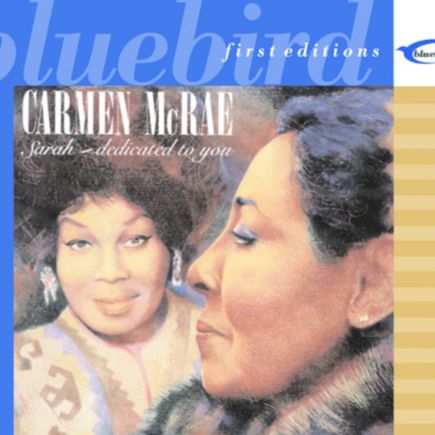Misty: naissance d’un standard entre brume et romantisme
À l’origine, Misty est une composition instrumentale écrite en 1954 par le pianiste américain Erroll Garner pour son album Contrasts, publié l’année suivante. Elle aurait été inspirée par un vol en avion au cours duquel Garner, contemplant le brouillard couvrant la ville en contrebas, aurait saisi cette image diffuse et poétique pour en faire la matrice d’un morceau à la fois intime et aérien.
En 1959, Misty prend une nouvelle dimension lorsque Johnny Burke en écrit les paroles. Le texte, empreint de rêverie et d’un amour presque irréel, épouse parfaitement l’atmosphère enveloppante de la musique.
C’est le chanteur Johnny Mathis qui fut le premier à enregistrer cette version chantée, d’abord sur son album Heavenly (août 1959), puis en single en septembre de la même année. Son interprétation rencontre un succès immédiat, ancrant Misty dans l’imaginaire collectif comme une chanson emblématique de la ballade romantique, à la croisée de la pop orchestrale et du jazz vocal.
En 1971, Clint Eastwood lui rend un hommage cinématographique dans son film Play Misty for Me (Un frisson dans la nuit), où le morceau devient le fil conducteur d’un thriller psychologique.
Carmen McRae, l’émotion à l’état pur
Enregistrée à New York les 12 et 14 octobre 1990 pour l’album Sarah – Dedicated to You, la version de Misty interprétée par Carmen McRae figure parmi les ultimes sommets d’une carrière marquée par l’intégrité artistique et la profondeur émotionnelle. À soixante-dix ans, la chanteuse, compositrice et pianiste rend ici hommage à Sarah Vaughan, son amie et rivale admirée, dans un disque conçu comme une lettre d’amour adressée à l’histoire du jazz vocal.
Elle y est accompagnée par le trio de Shirley Horn, qui soutient cette approche avec une délicatesse exemplaire. Le piano de Horn, d’un lyrisme feutré, dialogue avec McRae dans une conversation à la fois intime et suspendue. Charles Ables (basse) et Steve Williams (batterie) créent une pulsation souple, presque imperceptible, qui enveloppe la voix sans jamais l’enfermer.
Dans Misty, McRae trouve un terrain d’expression privilégié. Là où d’autres optent pour la douceur ou l’élan romantique, elle choisit la lenteur, la respiration et le silence. Chaque mot, chaque inflexion semble naître d’une réflexion intérieure. Sa voix, légèrement voilée, s’appuie sur un contrôle du phrasé d’une précision confondante.
Misty: nacimiento de un estándar entre la niebla y el romanticismo
Misty fue originalmente una composición instrumental escrita en 1954 por el pianista estadounidense Erroll Garner para su álbum Contrasts, publicado al año siguiente. Se dice que Garner se inspiró en un vuelo durante el cual, al contemplar la niebla que cubría la ciudad desde las alturas, captó esa imagen difusa y poética como punto de partida para una música íntima y etérea a la vez.
En 1959, Misty adquirió una nueva dimensión cuando Johnny Burke escribió su letra. El texto, impregnado de ensueño y de un amor casi irreal, se adapta perfectamente a la atmósfera envolvente de la música.
El cantante Johnny Mathis fue el primero en grabar esta versión cantada, primero en su álbum Heavenly (agosto de 1959) y luego como sencillo en septiembre del mismo año. Su interpretación tuvo un éxito inmediato, consolidando Misty en el imaginario colectivo como una canción emblemática de la balada romántica, situada entre la música pop orquestal y el jazz vocal.
En 1971, Clint Eastwood le rindió un homenaje cinematográfico en su película Play Misty for Me (Escalofrío en la noche), donde el tema se convierte en hilo conductor de un thriller psicológico.
Carmen McRae, la emoción en estado puro
Grabada en Nueva York los días 12 y 14 de octubre de 1990 para el álbum Sarah – Dedicated to You, la versión de Misty interpretada por Carmen McRae representa uno de los momentos culminantes de una carrera marcada por la integridad artística y la profundidad emocional. A los setenta años, la cantante, compositora y pianista rinde aquí homenaje a Sarah Vaughan, su amiga y rival admirada, en un disco concebido como una carta de amor a la historia del jazz vocal.
Está acompañada por el trío de Shirley Horn, que respalda esta interpretación con una delicadeza ejemplar. El piano de Horn, de lirismo aterciopelado, dialoga con McRae en una conversación a la vez íntima y suspendida. Charles Ables (contrabajo) y Steve Williams (batería) crean una pulsación flexible, casi imperceptible, que envuelve la voz sin limitarla jamás.
En Misty, McRae encuentra un terreno de expresión privilegiado. Donde otros eligen la dulzura o el impulso romántico, ella prefiere la lentitud, la respiración y el silencio. Cada palabra, cada inflexión parece nacer de una reflexión interior. Su voz, ligeramente velada, se apoya en un control del fraseo de una precisión asombrosa.
Misty: nascita di uno standard tra nebbia e romanticismo
Misty nasce come composizione strumentale nel 1954, firmata dal pianista americano Erroll Garner per l’album Contrasts, pubblicato l’anno seguente. Si racconta che l’ispirazione sia nata durante un volo in aereo, quando Garner, osservando la nebbia che avvolgeva la città sotto di lui, trasformò quell’immagine sfocata e poetica nella matrice di una musica intima e leggera.
Nel 1959, Misty acquisisce una nuova dimensione con l’aggiunta del testo scritto da Johnny Burke. Le parole, pervase da un amore quasi irreale e da un’atmosfera onirica, si fondono perfettamente con il carattere avvolgente della musica.
Il primo a incidere la versione cantata fu il cantante Johnny Mathis, nel suo album Heavenly (agosto 1959), seguito dal singolo pubblicato a settembre dello stesso anno. La sua interpretazione ottenne un successo immediato, consacrando Misty nell’immaginario collettivo come emblema della ballata romantica, a metà strada tra la pop orchestrale e il jazz vocale.
Nel 1971, Clint Eastwood le rese omaggio nel suo film Play Misty for Me (Brivido nella notte), dove il brano diventa il filo conduttore di un thriller psicologico.
Carmen McRae, l’emozione allo stato puro
Registrata a New York il 12 e 14 ottobre 1990 per l’album Sarah – Dedicated to You, la versione di Misty interpretata da Carmen McRae rappresenta uno degli ultimi vertici di una carriera segnata dall’integrità artistica e da una profonda intensità emotiva. A settant’anni, la cantante, autrice e pianista rende omaggio a Sarah Vaughan, amica e stimata rivale, in un disco concepito come una lettera d’amore dedicata alla storia del jazz vocale.
È accompagnata dal trio di Shirley Horn, che sostiene questa interpretazione con una delicatezza esemplare. Il pianoforte di Horn, dal lirismo ovattato, dialoga con McRae in una conversazione intima e sospesa. Charles Ables (contrabbasso) e Steve Williams (batteria) creano una pulsazione flessibile, quasi impercettibile, che avvolge la voce senza mai costringerla.
In Misty, McRae trova un terreno d’espressione privilegiato. Dove altri scelgono la dolcezza o l slancio romantico, lei preferisce la lentezza, il respiro e il silenzio. Ogni parola, ogni inflessione sembra nascere da una riflessione interiore. La sua voce, leggermente velata, poggia su un controllo del fraseggio di una precisione sorprendente.
Misty: the making of a standard between fog and romance
Originally an instrumental piece, Misty was composed in 1954 by American pianist Erroll Garner for his album Contrasts, released the following year. It is said that Garner was inspired during a plane flight, watching the mist covering the city below. That hazy, poetic image became the starting point for a piece both intimate and airy in nature.
In 1959, Misty took on a new life when lyricist Johnny Burke added words. The lyrics, filled with dreamlike sentiment and an almost unreal love, perfectly match the enveloping mood of the music.
Singer Johnny Mathis was the first to record the vocal version, initially for his album Heavenly (August 1959), and later released as a single in September of that year. His performance met with immediate success, establishing Misty in the public imagination as a quintessential romantic ballad, at the crossroads of orchestral pop and vocal jazz.
In 1971, Clint Eastwood paid tribute to the song in his film Play Misty for Me, where the track becomes the emotional thread of a psychological thriller.
Carmen McRae: emotion in its purest form
Recorded in New York on October 12 and 14, 1990, for the album Sarah – Dedicated to You, Carmen McRae’s rendition of Misty stands among the final peaks of a career defined by artistic integrity and emotional depth. At seventy, the singer, songwriter, and pianist pays tribute to Sarah Vaughan—her admired friend and rival—in a recording conceived as a love letter to the history of vocal jazz.
She is accompanied by the trio of Shirley Horn, who supports this interpretation with exemplary delicacy. Horn’s piano, soft and lyrical, engages McRae in a conversation that feels both intimate and suspended in time. Charles Ables (bass) and Steve Williams (drums) provide a supple, almost imperceptible pulse that envelops the voice without ever confining it.
In Misty, McRae finds a privileged field of expression. Where others choose sweetness or romantic drive, she opts for slowness, breath, and silence. Every word, every inflection seems to emerge from deep introspection. Her slightly husky voice rests on an astonishingly precise control of phrasing.


